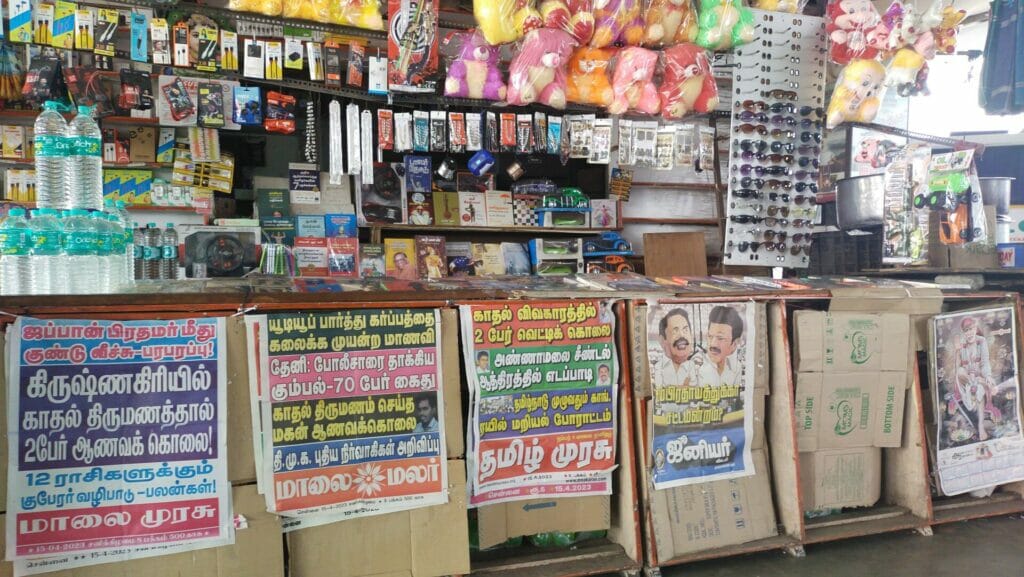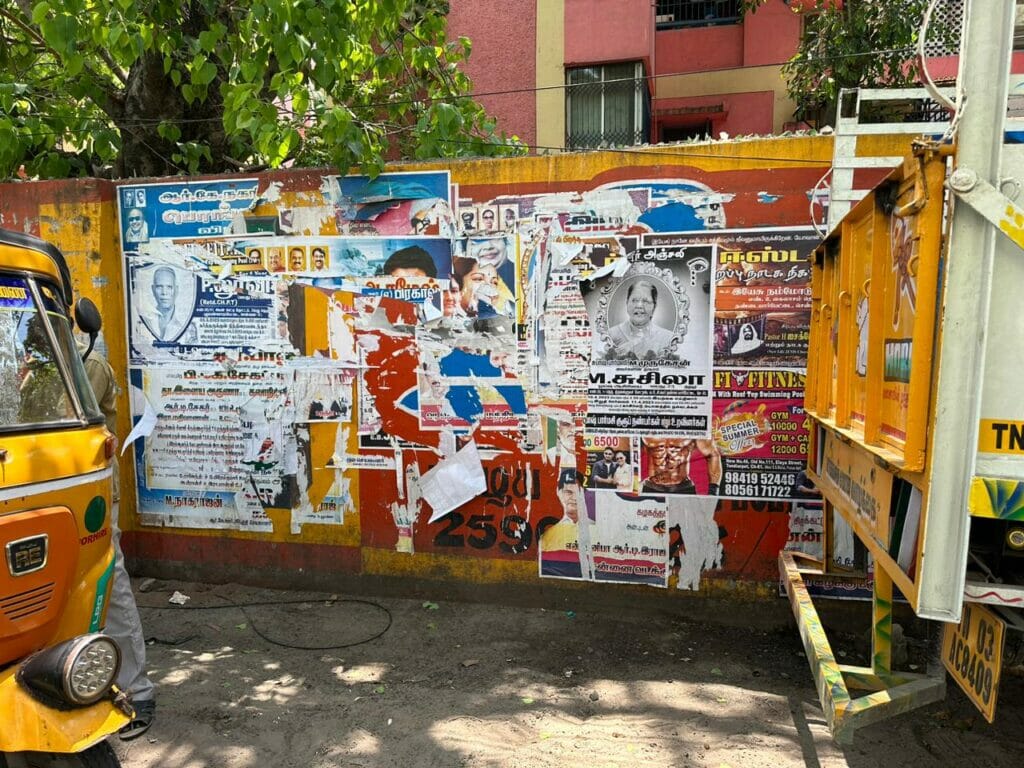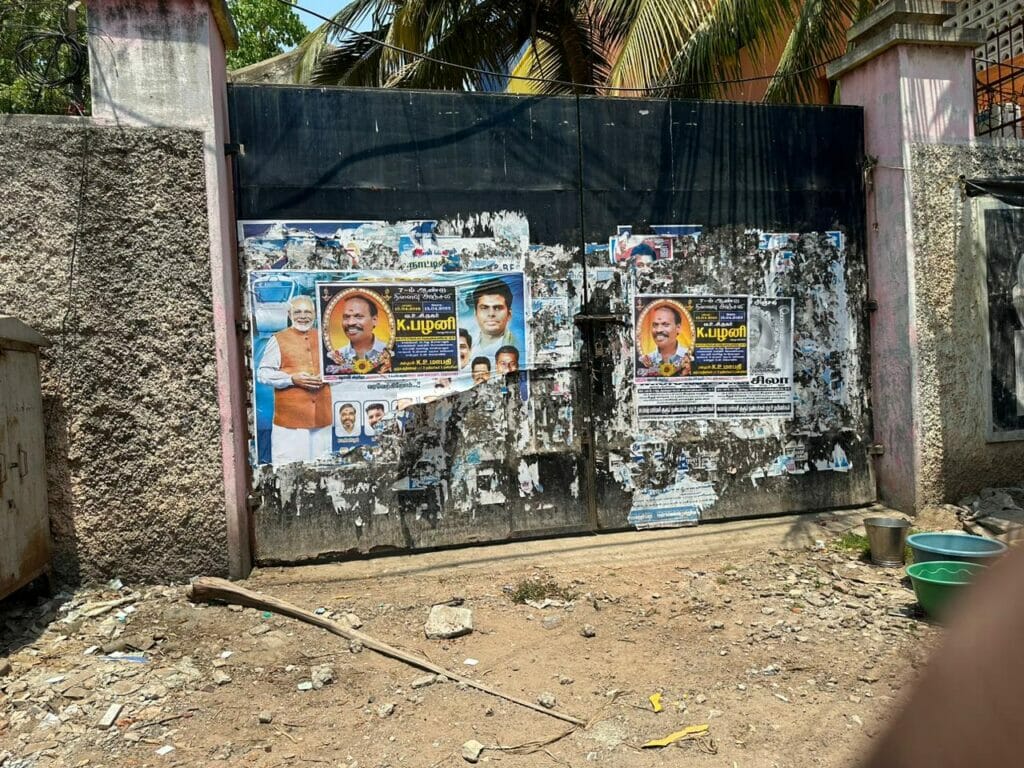Take a walk through any street in Chennai and you will find at least one wall filled with various posters announcing a new movie in the theatres, the obituary of a senior citizen in the locality and news of a political party meeting.
What do posters say about life in the city? When do they cross the line from being informative to being a nuisance to the public?
Posters as a source of knowledge
Many in the city see posters as an eyesore. But that is not all that defines what posters add to the landscape of the city.
“The poster is a great form of communication. It is deep-rooted in our culture,” says writer A Muthukrishnan. “People who are over the age of 60 can attest to the fact that they have gained a huge chunk of political and social knowledge through posters over their lifetime. Posters have been a part of all our lives.”
The power to disseminate information through posters cannot be overstated. There is still an audience for posters of vernacular newspapers that give away snippets of the news.
“For those who cannot afford to buy a newspaper, these posters are a free source of knowledge. Even today, vernacular papers print such posters only because there are live audiences for it,” says Muthukrishnan.

“We still have people in India who do not have smartphones. We cannot have everything exist only in the digital space as it is controlled and exclusionary. There is no level playing field in this. In a democratic country, we need space for freedom of expression and speech. I see posters as a space for the exchange of knowledge and freedom of expression and speech,” he adds.
“There used to be a huge wall in front of my home that carried posters announcing the latest movie release. A person pasted these posters every Thursday and this is how we came to know what movies were playing in the theatres that weekend,” recalls Muthukrishnan.
Many small theatres across Chennai still run play movies such as those of MGR and Shivaji. There is an avid audience for these movies.
“These theatres continue to paste the posters for such movies and this shows that there is a cultural aspect to posters. These posters show me that our people are driven by cinema and they love their art,” says Shalin Maria Lawrence, a Chennai-based social activist.
“Similarly, in areas like T Nagar, I have seen a lot of posters of theatrical plays. This is a way for people to know what is happening in the arts,” adds Shalin.
Read more: Curbing the use of wall posters in Chennai
Political significance of posters in Chennai
Posters also play a major role in setting the political narrative at the grassroots level. A political party’s poster found ubiquitously in an area signals the strength and sway the party holds there. Posters can also signal changing trends in people’s perceptions and preferences.
“For instance, there is a wall in North Chennai where only AIADMK posters used to be present. After over 25 years, now VCK has taken over the space. Similarly, there is a wall near a Communist Party office in which only Communist posters and paintings were present. Now, I find BJP posters slowly taking up a small space on the wall. In these settings, posters are used to show the dominance of a particular party over the others in the locality,” says Shalin.

Inferences can be made also by the presence or absence of posters.
“If you have observed, in recent times, the number of AIADMK posters has considerably reduced in Chennai. It conveys to me that the party cadres could be demotivated,” says Shalin, adding that posters are an indicator of the current happenings in a particular party and politics at large
Posters are a tool used by grassroots politicians who work in close association with the people.
“Even if one name of such a grassroots politician is missing in the poster, it becomes a huge issue in the party. The order of names in the posters and the placement of photos also matter. Posters, in politics, is about representation,” says Shalin.
Read more: Banners and hoardings to be back on city streets, much to citizens’ dismay
Role of posters in the lives of the working-class
Posters play a major role in the lives of working-class people. When flex banners were cheap in the 1990s, many people from the working class and oppressed castes started using banners.
With banners becoming expensive, posters have come to take up the space held by them. Posters are more affordable and unlike the banners, which are made of plastic, the posters, are both harmless and integral to the subaltern culture.
Posters announcing celebrations and obituaries can be found across working-class neighbourhoods in Chennai.
“We might have seen the individual in passing or interacted with them a couple of times but might have not known them personally. I have come to know of their demise only through posters,” says Shalin.

“When there is bereavement in the family, posters are used as a tool to communicate the news. The family may not be able to reach out to everyone personally but the posters help in spreading the information,” says Sakthivel N, a resident of Vyasarpadi.
“Posters help bring together the community to support the grieving family and also pay tribute to the deceased,” says Sakthivel.
“When a famous person dies, the media telecasts the entire funeral procession on television. Famous people get that kind of visibility. This is not the case for the working-class individual. Hence posters are both cost-effective and a quick medium to communicate news like a death for a specific audience,” says Saravanan, a resident of Kodungaiyur.
Finding a middle ground
Though there is a cultural significance attached to posters in Chennai, it is only right to accept that it becomes a menace in certain situations.
“Sometimes, when people paste these posters on signboards that have directions and street names, it becomes a public nuisance,” says Shalin.
Similarly, Madhan, who lives near Kottur Gardens, says that Chennai has a lot of beautiful old buildings. “The poster defaces such structures and makes it look ugly,” he says.”The Tamil Nadu Open Places (Prevention of Disfigurement) Act, 1959 should be used to curb such instances.”
While there are valid reasons to curb the use of posters indiscriminately, their utility to the common man cannot be denied.
“There is a huge industry and economy behind posters in Chennai and across various parts of Tamil Nadu. There is a socio-cultural and economic aspect that involves the livelihood of hundreds and thousands of families in this,” says Muthukrishnan.
“Given the significant role of posters in our lives, the question is where to paste them. I have seen in many countries where there are walls earmarked or boards erected by the government for pasting posters,” says Muthukrishnan.
“Such spaces should be created where the public gather at large. It will make sense for the government to impose fines only if in the event that it provides an alternative space,” says Muthukrishnan.

For the topic, well researched and well written!!